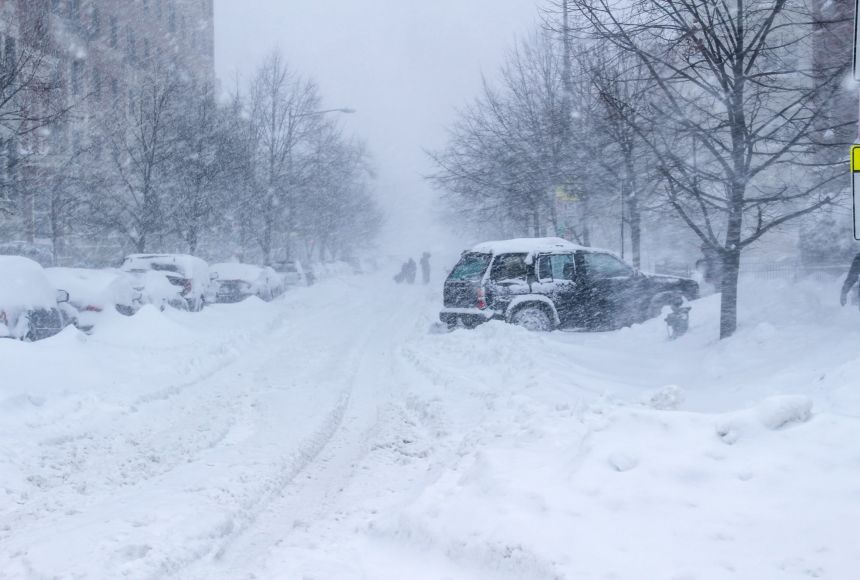Unusually severe blizzards have hit the Northeastern United States in the last few years. In 2010, a winter storm dubbed "Snowmageddon" or "Snowpocalypse" hit the U.S. East Coast. The storm caused blizzard conditions that brought the Washington, D.C., area to a standstill. In 2016, another historic and deadly blizzard, nicknamed "Snowzilla," struck the mid-Atlantic region. In 2019, a polar vortex plunged the U.S. Midwest into Arctic conditions. These are storms that pull low-pressure cold air from the polar vortex near the poles.
A blizzard is a dangerous type of winter storm with strong winds, snow, and reduced visibility. Blizzards form when snow falls in windy conditions or when snow is lifted from the ground by strong winds. Some blizzards can cause whiteout conditions. It is impossible to tell the sky from the ground.
Burning Fossil Fuels Brings More Intense Weather
Scientists predict that extreme weather events will become more intense due to climate change. It is caused by human activities, mostly from burning fossil fuels. These include gas, coal, and oil. When these fuels are burned, large amounts of carbon dioxide (CO₂) are released into the atmosphere. Carbon dioxide is a greenhouse gas that allows the sun's heat to reach Earth and then traps it in the atmosphere. The Earth needs these gases because they trap enough heat from the sun to keep it warm. But too much causes global temperatures to rise. This is known as global warming. Average global temperatures have already risen in the last century. They are expected to continue to rise unless humans take action to reduce the amount of greenhouse gases in the atmosphere.
Weather and climate are two different things. Weather refers to short-term conditions in the atmosphere, like the cloudy, sunny or rainy times we see day to day. A blizzard such as "Snowzilla" is an example of short-term weather event. On the other hand, the recent warming temperature trends over the past two decades suggest a change in climate. Climate is a long-term average of weather patterns. Climate is usually measured over a period of 30 years or more.
How does a warmer climate affect blizzards? A warmer atmosphere holds more moisture. Higher sea temperatures push more water and energy into the atmosphere, also causing more severe weather. All that moisture eventually falls as rain or snow in more frequent and more intense storms. Harsh blizzards will happen in areas that are still cold enough for snow.
Effects of Declining Sea Ice are Wide Spread
Sea ice in the Arctic has been steadily declining and increases the effects of global warming in the Arctic. Sunlight usually gets reflected by the ice, but without the ice, sunlight is absorbed by the ocean. The sunlight warms the sea surface, which melts more sea ice. This cycle causes the Arctic to warm about twice as fast as the rest of the world. It is known as Arctic amplification. This influences weather patterns in other parts of the world.
The effects of global warming are also felt in the atmosphere, particularly the jet stream. The jet stream is a fast-moving current of air that circles the lowest region of the atmosphere. The jet stream has a significant effect on weather in Europe and North America. The bigger the temperature difference in the north and south of its path, the faster the jet stream. As the Arctic warms, the temperature difference between the polar regions and the tropical regions decreases. This slows the jet stream and causes its path to move farther north and south. As it dips farther south than usual, it pulls Arctic air down from the north. This causes a spell of unusually cold weather in that region. Disturbances to the jet stream have been linked to an increase in extreme cold weather events, including blizzards and polar vortex storms.

